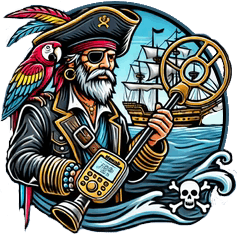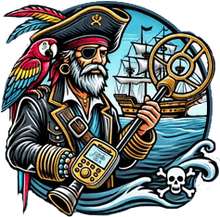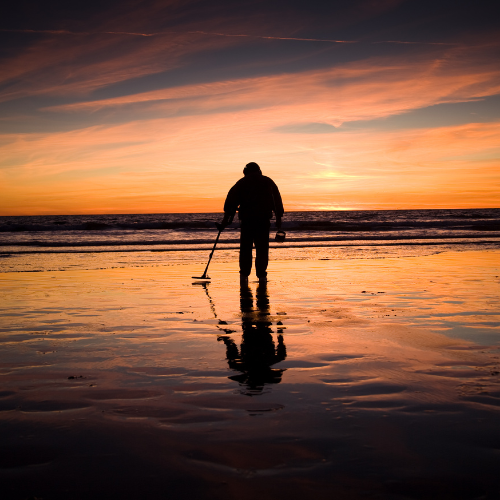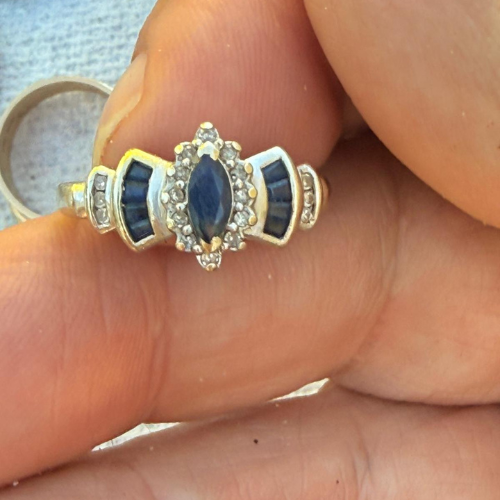
The allure of the beach is undeniable for the metal detectorist. Whispers of lost jewelry, forgotten coins, and relics carried in by the tide beckon us to the sandy shores. For those wielding the powerful Minelab Manticore metal detector, the potential for coastal treasure hunting is immense. However, the dynamic environment of the beach, especially the challenging conditions of wet sand and saltwater, requires a nuanced understanding of your detector’s settings.
This comprehensive guide, brought to you by Treasure Coast Metal Detectors, will dive deep into optimizing your Minelab Manticore for success on the wet sand and in the saltwater. We’ll help you unearth those coveted coastal finds and show you why the Minelab Manticore is the ultimate choice for beach metal detecting right here in Jensen Beach, Florida, and beyond.
Understanding the Coastal Challenge
Beach metal detecting, particularly in saltwater environments, presents unique obstacles that differ significantly from land hunting:
-
Saltwater Conductivity: Saltwater is highly conductive, which can overwhelm many metal detectors, leading to false signals and reduced depth.
-
Wet Sand Mineralization: Wet sand often contains a high concentration of minerals like magnetite, which can also cause interference and ground balance issues.
-
Wave Action and Movement: The constant motion of waves and shifting sands can make it difficult to maintain a stable signal and pinpoint targets.
-
Trash Density: Beaches can be hotspots for modern trash like bottle caps, pull-tabs, and foil, requiring effective discrimination or the willingness to dig a bit more.
The Minelab Manticore, with its advanced Multi-IQ+ technology, is exceptionally well-equipped to handle these challenges. Its simultaneous multi-frequency capabilities and dedicated Manticore beach settings are designed to minimize the impact of saltwater and mineralization, allowing you to detect deeper and more accurately. The IP68 waterproof rating ensures you can confidently take your hunt from the dry sand to the surf.
Selecting the Right Beach Mode
The Minelab Manticore boasts three powerful Beach modes, each optimized for different saltwater conditions and hunting preferences. Experimentation is key, but here’s a breakdown to get you started on your saltwater metal detecting adventure:
-
Beach General: This mode is suitable for dry sand and general beach conditions. It offers a great starting point for finding a wide variety of targets.
-
Beach Low Conductors: This mode is specifically designed for detecting low-conductivity targets, such as fine gold jewelry, in beach settings. If you’re hunting for that elusive small gold ring, this is the mode to try.
-
Surf and Seawater: Optimized for the most challenging conditions, this mode is your go-to for underwater detection in the wet sand and surf. It is specifically engineered to handle the high conductivity of saltwater.
Essential Settings for Beach Hunting
To get the most out of your Minelab Manticore, you’ll want to fine-tune your settings based on the conditions. Here are the recommended starting points:
Ground Balance:
-
Dry Sand: Auto or manual ground balance is often sufficient.
-
Saltwater/Surf: Tracking ground balance is highly recommended for adapting to the constantly changing mineral content in wet sand and surf. This allows the detector to automatically adjust as you move.
Sensitivity:
-
Dry Sand: Start with a sensitivity of 22-28 and adjust based on stability. If you hear too much chatter, lower it slightly.
-
Saltwater/Surf: Begin with a lower sensitivity of 18-22 and adjust as needed. This helps to reduce false signals from the highly conductive saltwater.
Recovery Speed:
-
A setting of 4-6 is a good starting point for most beach conditions. This provides a balance between target separation in trashy areas and depth on clean beaches.
Audio Theme:
-
Experiment with the "Prospecting" audio theme for enhanced subtle signals. This can be especially useful for hearing faint targets in dry sand, where gold jewelry might be found.
Ferrous Limits:
-
Adjust this setting to effectively filter out unwanted iron signals. You can raise the ferrous limits to reject more iron, but be aware that some deeper or heavily corroded targets might also be filtered out.
Minelab Manticore Target ID Chart
The Minelab Manticore uses a Target ID (TID) scale from 0 to 99 to help you identify the type of metal you've found. Lower numbers indicate less conductive targets, while higher numbers indicate more conductive targets.
It's important to remember that these are general ranges, and the TID can be influenced by factors like the target's size, shape, depth, orientation, and the soil's mineralization. A stable, repeatable number is generally a good sign.
Here is a general breakdown of common targets and their typical TID ranges:
-
Silver Coins (Dimes, Quarters, Halves, Dollars): 85-99
-
Modern Quarters (Clad): 85-90
-
Dimes (Clad): 80-85
-
Copper Pennies (pre-1982): 80-85
-
Zinc Pennies (post-1982): 72-78
-
Nickels: 25-30
-
Small Gold Jewelry (thin rings, earrings): 8-20
-
Medium Gold Jewelry (wedding bands, class rings): 20-45
-
Large Gold Jewelry (heavy bands, gold coins): 60-80
-
Platinum Rings: 70-85
-
Small Foil: 5-15
-
Modern Pull-tabs: 22-30
-
Older Pull-tabs: 30-40
-
Can Slaw (shredded aluminum): 40-80 (often gives an erratic signal)
-
Bottle Caps (steel/corroded): 80-99 (often with a "scratchy" or broken tone)
Other Tips for Successful Beach Hunting
-
Noise Cancel: Perform a regular noise cancel to minimize interference from the environment, power lines, or other metal detectors nearby.
-
Coil Size: While the stock M11 coil is a great all-around coil, consider a smaller coil for areas with high trash. A smaller coil will help with target separation and pinpointing in cluttered spots.
-
Target Tones: Customize your target tones for better signal differentiation. Learning to recognize the specific tones of good targets is one of the most important skills you can develop.
-
All Metal Mode: Consider using All Metal Mode for maximum depth and signal information, especially in clean areas. In this mode, you'll hear every signal and rely on the audio tone and 2D ID map to decide what to dig.
-
Digging Strategy: For the best chance at finding gold, dig anything that gives a repeatable signal in the 20-60 TID range. This range is often where you'll find a variety of gold jewelry.
-
VCO Audio: Utilize the variable pitch audio to better identify faint signals. The pitch of the audio will change with the size and depth of the target, giving you more information before you dig.
-
Sweep Technique: Use a cross sweep to check signal consistency. After you get a hit, sweep over the target from different angles (left-to-right, then front-to-back) to confirm it’s a solid signal and not just a piece of can slaw.
-
Tide: Detect during low tide for the best results. This exposes areas of the beach that are rarely hunted and can be a gold mine for new finds.
Conclusion
The Minelab Manticore is a formidable tool for conquering the challenges of beach and saltwater metal detecting. By understanding its dedicated Minelab Manticore beach settings, mastering ground balancing techniques, and learning how to interpret signals in the coastal environment, you can significantly increase your chances of finding those hidden treasures beneath the sand and waves.
So, grab your Minelab Manticore, head to the Treasure Coast, and embrace the adventure of beach and saltwater metal detecting. With the right knowledge and a bit of persistence, you’ll be well on your way to uncovering the exciting history and lost valuables that the ocean currents bring our way.
To find the most powerful detectors, including the Minelab Manticore, and get expert advice, visit us at Treasure Coast Metal Detectors in Jensen Beach, FL, or explore our online store today! Happy hunting!





Leave a comment